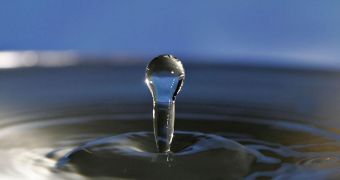Researchers at the Stanford University announce an innovation that could bring the widespread adoption of water-splitting technologies one step closer to fruition. Their work eliminates one of the most important challenges facing this area of research.
Splitting water into oxygen and hydrogen has been a dream for both physicists and chemists for decades, since the process would not create any harmful byproducts. Its only result would be the creation of pure hydrogen and oxygen.
Theoretically, splitting water – a process called hydrolysis – is very simple. All that needs to be done is to pass an electrical current between two electrodes placed in water. The results are nearly immediate.
Despite its great many advantage, hydrolysis is also plagued by technical and engineering challenges. For nearly four decades, experts have been wrestling with various stubborn aspects of the process.
The end goal is to make it scalable to the vast level needed for it to make a difference. But one of the most important problems that stop this from happening is the corrosion of the electrodes used to create the current in water samples.
“In theory, water splitting is a clean and efficient energy storage mechanism. Unfortunately, solving one problem creates another,” explains Stanford associate professor of materials science and engineering Paul McIntyre, a leader of the research team.
“The most abundant solar electrodes we have today are made of silicon, a material that corrodes and fails almost immediately when exposed to oxygen, one of the byproducts of the reaction,” he adds.
The expert led the research team together with Christopher Chidsey, a chemist at the university. Details of their work appear in a recent issue of the top scientific journal Nature Materials.
The way the team used to get around the corrosion problem was simple and ingenuous – cover the elements with protective, ultra-thin layers of a chemical called titanium dioxide.
“Titanium dioxide is perfect for this application. It is both transparent to light and it can be efficient for transferring electricity, all while protecting the silicon from corrosion,” the team leader goes on to say.
“We are excited about the possibilities of this technology, as much for the electrode itself, as for the process used to create it,” McIntyre concludes.

 14 DAY TRIAL //
14 DAY TRIAL //